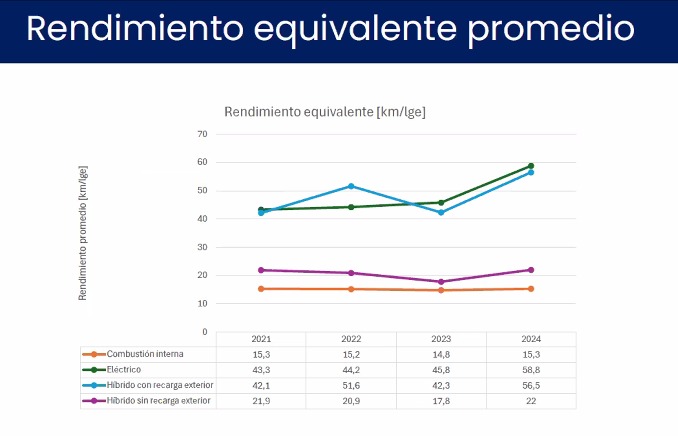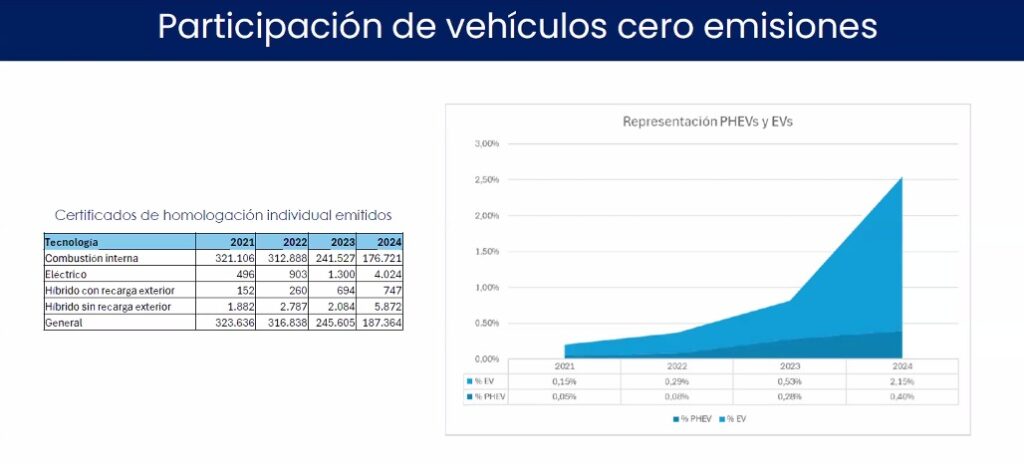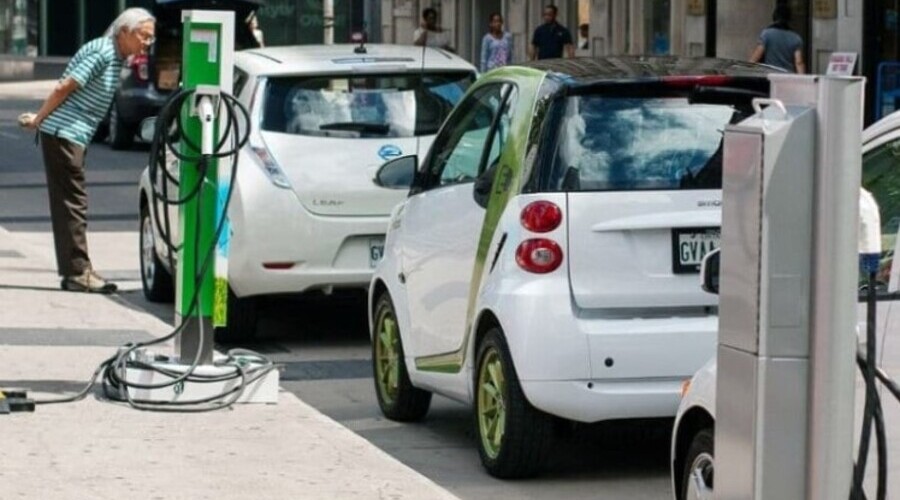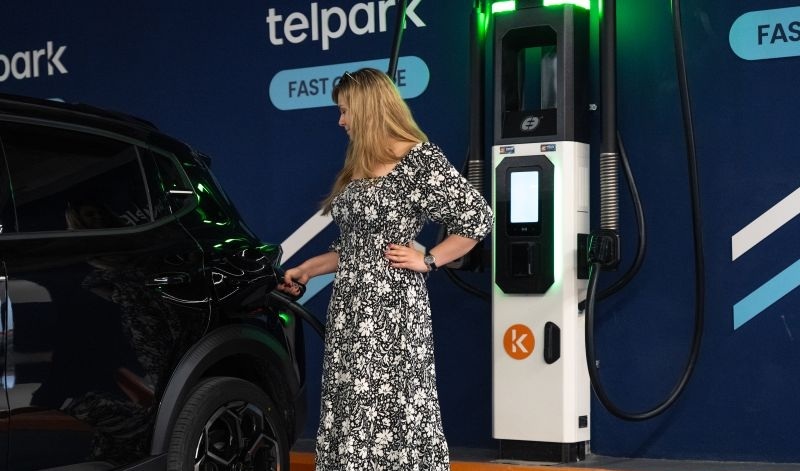The implementation of the energy efficiency standard for light vehicles in Chile, as set out in Article 7 of Law 21.305 on Energy Efficiency, is already showing promising results.
One year after coming into effect, the Ministry of Transport and Telecommunications has released the first official compliance report, revealing significant progress in both energy efficiency and the adoption of zero-emission technologies within the light vehicle fleet.
The report shows that 187,364 vehicles were regulated during 2024, of which 4,771 were zero-emission models, including battery electric vehicles (EVs) and plug-in hybrids (PHEVs).
This marks a 636% increase compared to 2021, when just 648 such vehicles were registered.
In addition, the average energy performance of all light vehicles reached 16.6 kilometres per litre of petrol equivalent (km/lge), representing an 8.5% improvement compared to 2021 levels, when the average stood at 15.3 km/lge.
This increase stands as the most significant improvement in energy efficiency recorded in the country since official measurements began in 2013.

Market Impact and Corporate Commitment
One of the most noteworthy findings in the report is the significant increase in the share of importers complying with the standard, rising from 1.5% in 2021 to 61.2% in 2024.
This indicator suggests a high level of market adaptation to regulatory requirements, also driving improvements in the availability of more efficient technologies.
By technology type, electric vehicles achieved an average performance of 58.8 km/lge in 2024, compared to 43.3 km/lge in 2021—an improvement of 35.8%.
Plug-in hybrids increased from 42.1 to 56.5 km/lge, while conventional hybrids reached an average of 22 km/lge, also showing favourable progress.
In contrast, internal combustion engine vehicles maintained relatively stable performance, ranging between 14.8 and 15.3 km/lge.
The graph of average efficiency by propulsion type clearly highlights the growing gap between conventional and zero-emission technologies, signalling a clear trend towards electrification as a means of regulatory compliance and improved energy efficiency.

Exponential Growth of Zero-Emission Vehicles
The share of electric and plug-in hybrid vehicles among all type approval certificates in Chile rose from just 0.2% in 2021 to 2.5% in 2024, according to official records.
While these figures may appear modest in absolute terms, the upward trend is striking. In relative terms, this represents an increase of more than twelvefold in just three years.
Specifically, the number of fully electric vehicles approved rose from 496 units in 2021 to 4,024 units in 2024, while plug-in hybrids increased from 152 to 747 units over the same period.
These results reinforce the view that the new standard has not only encouraged greater adoption of clean technologies, but also driven technical improvements in their performance.
Over a Decade of Public Policy
Chile’s current vehicle energy efficiency policy dates back to 2013, with the mandatory implementation of energy labelling for light vehicles, which was extended to medium-sized vehicles in 2017.
In 2021, Law 21.305 was enacted, mandating the establishment of minimum efficiency standards for light, medium, and heavy vehicles.
For light vehicles—those with a gross vehicle weight (GVW) of less than 2,700 kg—the regulation was published in 2022, and the standard officially came into effect in March 2024.
According to the official timeline, the standard for medium vehicles will take effect in 2026, followed by heavy vehicles in 2028.
Next Steps and Expectations
Chile could become a regional benchmark.
Unlike other policies that promote indirect incentives, Chile has moved forward with regulation based on measurable targets and a technical monitoring system, enabling the assessment of real impacts over a short period.
The release of the first compliance report is, in this regard, an institutional milestone that strengthens the governance of both energy and transport policy.
Looking ahead, the implementation of standards for medium vehicles in 2026 and heavy vehicles in 2028 is expected.
If the current trend continues, the combined effects of these measures could lead to a structural transformation of the national vehicle fleet.
According to the official portal, efforts continue to promote the use of energy labels as a consumer information tool, complementing the regulatory approach with awareness-raising initiatives.
READ MORE
-
UK updates eligibility criteria for the Electric Car Grant
The UK Government sets new technical and environmental requirements that manufacturers must meet for their electric vehicles to qualify for grants of up to £3,750.
-
Deftpower raises €12.5M to boost European growth and enhance its AI-powered charging tech
Deftpower aims to make EV charging cheaper, cleaner, and smarter for drivers and CPOs, while easing pressure on Europe’s congested power grids.
-
Ekoenergetyka: Investing in EV charging at car parks is more crucial now than ever before
Public car parks are no longer just simple transit points. With the addition of chargers, they are becoming strategic hubs for electric mobility. What is Ekoenergetyka’s strategy?









